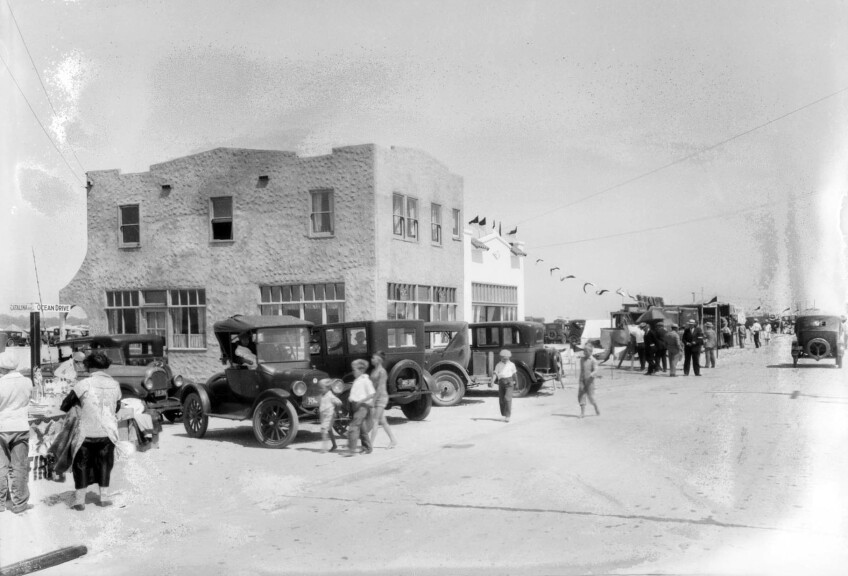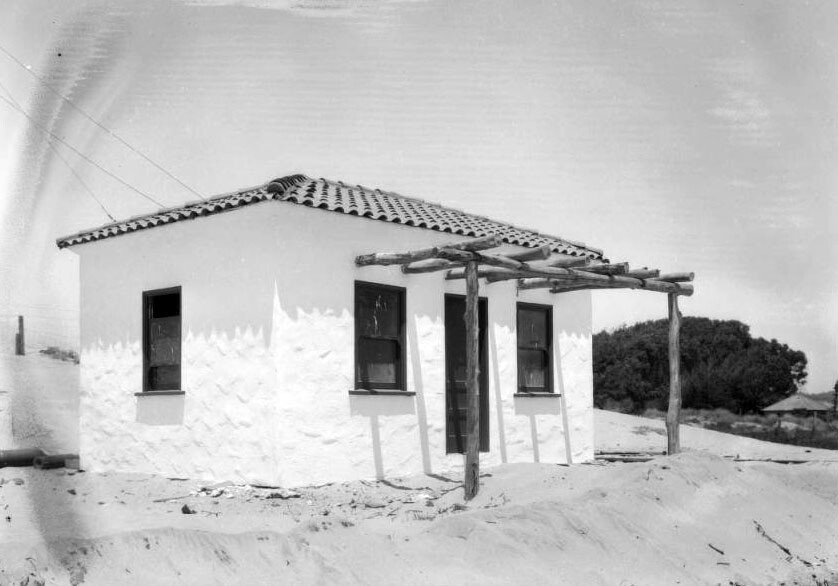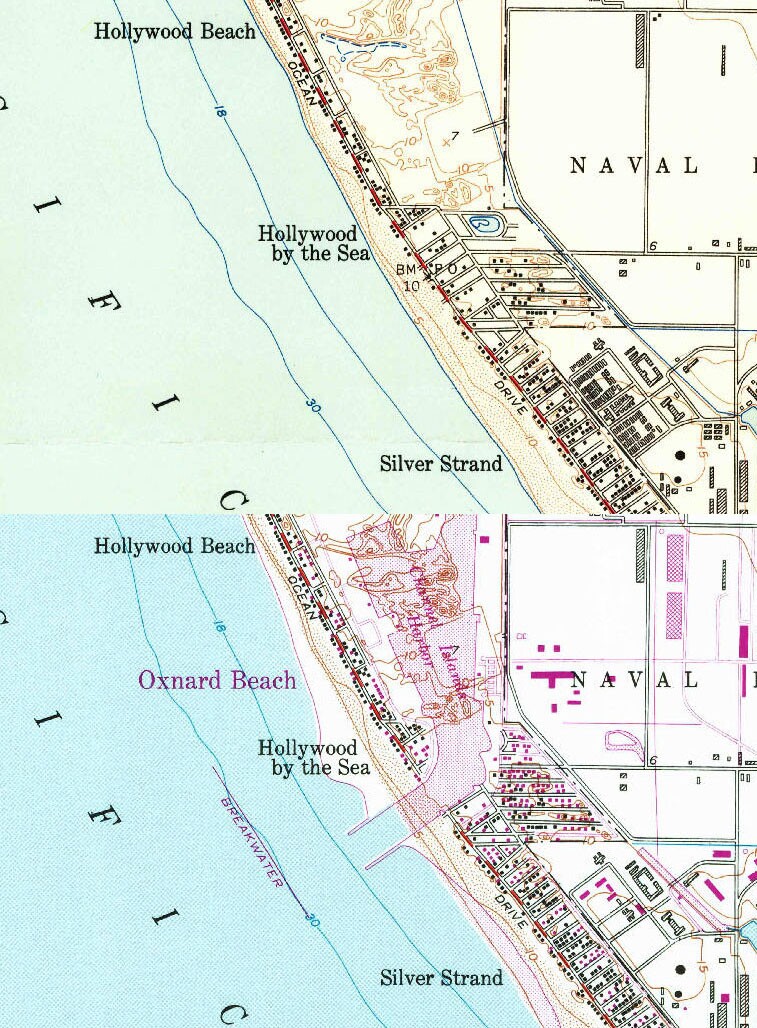When Oxnard Beach Became 'Hollywood-by-the-Sea'

Never mind that Tinseltown was five or even fifty miles away. By the mid-1920s, the Hollywood brand was so strong that communities across Southern California were affixing it to their names. Toluca became North Hollywood. Sherman became West Hollywood.
And in distant Ventura County, Oxnard Beach became Hollywood-by-the-Sea.
There was some truth in the glitzy moniker of the beachfront resort, built atop the sand dunes of Leon Lehmann's beachfront ranch. Disguised with papier-mâché palm trees as the Arabian desert, the dunes had starred alongside Rudolph Valentino in the 1921 blockbuster, "The Sheik." A few years earlier, Douglas Fairbanks spent time on the same dunes while filming "Bound in Morocco."
That Hollywood connection was enough for real estate developers to establish the Hollywood Beach subdivision just north of Lehmann's ranch in 1924 and the Silverstrand ("silver screen") tract just south of it in 1925. And so it's hardly surprising that Lehmann himself soon capitalized on the connection. In 1926, he sold his 80-acre ranch to developer Fred J. Cutting, who leveled the dunes, carved out 100 individual lots, and christened the site Hollywood-by-the-Sea.
Atop the flattened dunes, Cutting platted a tiny street grid that honored both of Hollywood-by-the-Sea's namesakes. Streets nearest the ocean bore the names of the Channel Islands: Catalina Avenue, Anacapa Avenue, Santa Rosa Avenue, and so on. Further inland, street names recalled the thoroughfares of Hollywood: Sunset Drive, Laurel Court, Cahuenga Drive. To maximize waterfront property, Cutting placed a five-acre lake, its sandy shores planted with iceplant, a few hundred feet from shore.
Ironically, the transformation into Hollywood-by-the-Sea promptly drove away motion picture productions, which valued the location for its desert-like landscape. But the lack of any actual movie stars didn't stop Angelenos from making the long drive out to Oxnard. Visitors could buy their own housing lot for a vacation home, but they could also stay in a 40-room hotel or simply camp on the beach. Perhaps drawn by memories of Valentino, a crowd of several thousand flocked to Hollywood-by-the-Sea on its first Fourth of July in 1927.
Around that time, a photographer from the Dick Whittington studio visited Hollywood-by-the-Sea. Commissioned by Cutting, these photos – recently digitized by the USC Libraries with support from the National Endowment for the Humanities – reveal the resort in its early stages of development, a sandy expanse dotted with a few rudimentary buildings.
The scene has changed. Houses eventually rose on vacant lots, and Hollywood-by-the-Sea, Hollywood Beach, and Silver Strand are now billed as a more affordable version of Malibu – the "un-Malibu" is what the New York Times called the area in 2007. Furthermore, construction of the Channel Islands Harbor in the 1960s inserted a waterway and jetties directly through Hollywood-by-the-Sea, splitting the community in two.
But one thing remains the same: the aura of silver-screen fame. Clark Gable supposedly lived in at least two houses on Oxnard's beaches. Local lore recalls Charlie Chaplin and Greta Garbo vacationing there. And travel guidebooks dutifully report that the Latin Lover, Rudolph Valentino – who likely never returned after "The Sheik" wrapped -- later bought a vacation house atop the leveled sand dunes of Hollywood-by-the-Sea.










